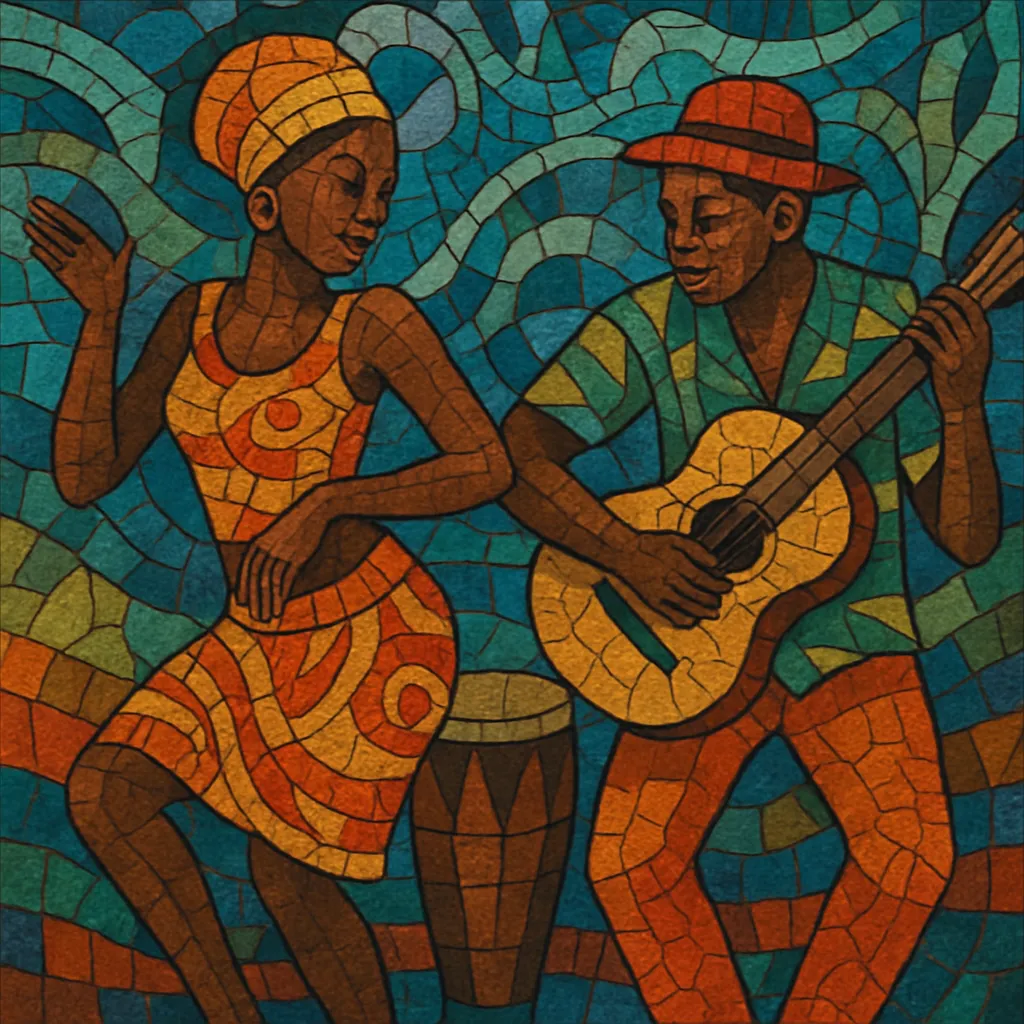Kwassa kwassa is a late-1980s soukous-derived dance rhythm and performance style from the Democratic Republic of the Congo. It is both a musical groove and a signature hip-swinging dance in which the hands follow the hips in alternating directions.
Musically, kwassa kwassa tightens the bright, interlocking lead and rhythm guitar figures of soukous, sets them over brisk 4/4 drum kit patterns with congas and shakers, and extends the sebene (instrumental dance break) to keep dancers in motion. Vocals are typically in Lingala with exuberant call-and-response hooks, while bass lines cycle through buoyant, diatonic ostinatos that drive the groove.
The style crystallized in the Parisian Congolese diaspora and spread across Central and West Africa, popularized by artists such as Kanda Bongo Man and Aurlus Mabélé. It paved the way for even faster, harder-edged dance styles like ndombolo in the 1990s.
Kwassa kwassa emerged in the Democratic Republic of the Congo during the late 1980s as a dance-focused evolution within soukous. Building on the legacy of Congolese rumba (itself rooted in Cuban son/rumba) and the sebene-driven guitar language of 1970s bands, performers emphasized hip-centric choreography that matched an increasingly streamlined, uptempo groove.
Many key figures recorded and toured from Paris, a hub for Congolese and Central African musicians. Kanda Bongo Man, often credited with popularizing the kwassa kwassa dance and feel, worked with virtuoso guitarists like Diblo Dibala to foreground long instrumental breaks and crisp, interlocking guitar parts. Aurlus Mabélé (with the band Loketo) helped spread the sound throughout Francophone Africa and the Caribbean club circuit.
Music videos and televised performances amplified the genre’s choreographic identity—recognizable hand-and-hip motions became a continental dance craze. The polished studio production of the era (synth stabs, drum machines augmenting live kit, and bright mixing) made the style compatible with club systems and radio.
In the 1990s, kwassa kwassa’s speed and dance-first orientation influenced the development of ndombolo, which pushed tempos higher and grooves harder. Its guitar vocabulary, vocal call-and-response, and elongated sebenes also fed into broader Central and West African pop, intersecting with zouk/compas circuits and shaping how dance music was staged on African and diaspora stages.


